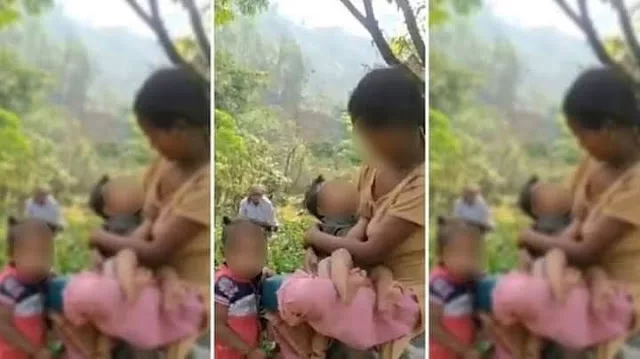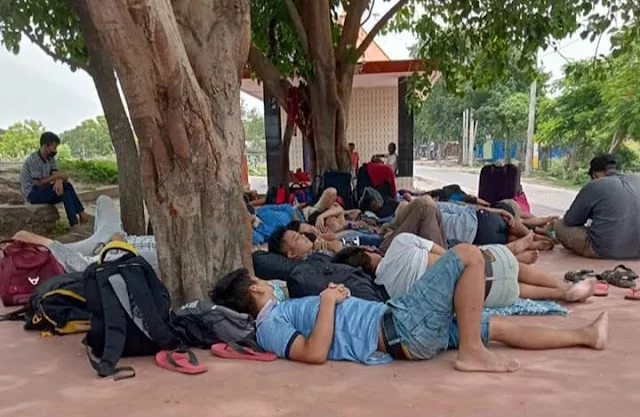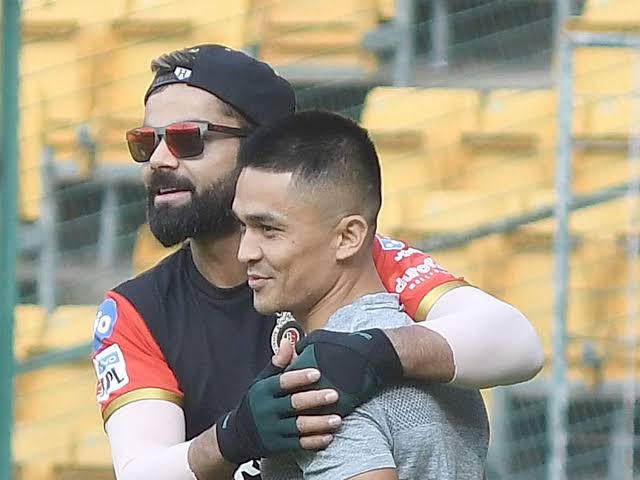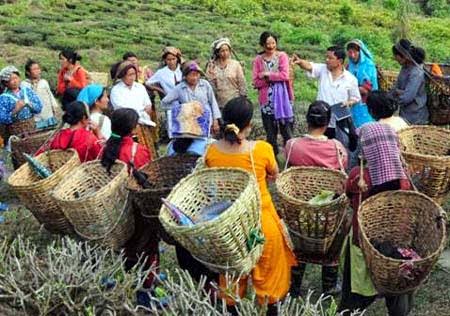The Gorkha Identity
Indian Gorkhas are Nepali speaking community mostly living all along the Himalayan belt and the North-East states of India. Gorkha is an umbrella term for numerous groups and tribes such as Chettri, Bahuns, Newars, Gurungs, Mangars, Rais, Limbus, Tamangs, Sunuwar, Thamis and others.The term ‘Gorkha’ in the Indian context is used to differentiate the INDIAN CITIZENS of Nepali ethnicity from the citizens of Nepal who prefer to be called ‘Nepalese.’
 |
| Gorkhaland Map |
History of the region.
History of Darjeeling runs closely with Bhutan, Nepal and Sikkim.
Darjeeling including Kalimpong was a part of Sikkim.
The present day Darjeeling came under the British occupation during the 19th century in Three stages
Stage 1
Darjeeling was annexed by Nepal from Sikkim. The region was under Nepal from 1778-1815
So it is wrong to say that Darjeeling was a part of Nepal. It was just a possession for 27 year.
Important years and Agreements
1815- Anglo Nepalese War, Treaty of Segowlee- Nepal lost and gave certain areas including Darjeeling under British administration.
1817- Treaty of Titalia, Parts of the region taken from Nepal was handed over to Sikkim by the British.
1835- Deed of Darjeeling Grant, Sikkim ceded a portion of hills to the British for setting up sanitorium.
Stage 2
Feb 1850- Joseph Hooker and Dr. Campbell’s visit to Sikkim East India Company attacked Rangeet Valley and 640 sq miles of land was captured. This is how Sikkim lost entire Terai and Siliguri to British.
Stage 3
1706- Bhutan attacked Sikkim’s the then capital Rabdentse. So Sikkim lost entire Kalimpong, Teesta and Doars to Bhutan
1864- Dispute between Bhutan and the British
1865- Treaty of Sinchula signed between Bhutan and British.
How the British regulated these areas under their administration?
1866-1870- kept under General regulations as per the British Regulating Act of 1774
This meant that in Darjeeling District, Bengal could not implement its Acts or regulations.
1919- Govt. Of India Act regarded Darjeeling as ‘ Excluded Area ’, highlighting its different characteristics with that of Bengal.
1935 – Darjeeling declared as ‘Partially Excluded Area’
The Darjeeling region only became a part of West Bengal Presidency in the year 1935, when it was required to send an elected member to the Bengal Legislative Assembly. It was just clubbed with Bengal for Administrative convenience. Hence it is never the Partition of Bengal.
1946- Thakkar Commission Report
Is the demand for Gorkhaland illegal?
No, to demand for a separate state is the democratic right of every Indian citizen, and the formation of new states is enshrined in our constitution (Article 3). Article 3 legitimizes the formation of new States and alteration of areas, boundaries or names of existing States Hence, the demand for Gorkhaland is a legitimate demand.
History of Gorkhaland Movement.
Pre- independence ( Please note that the movement started before the independence )
1907- Memorandum to the British govt demanding separate adm. Setup
1917- Memorandum to the Chief Secretary,Govt. Of West Bengal, Secretary of the state of India and the viceroy- by the representatives of Bhutia, Lepcha and Nepali Community and Hillmen’s Association .
1920- Hillmen’s Association again appealed to Edwin Montague.
1929- When Simon Commossion came to India, Hillmen’s Association again raised the demand.
1930- Joint petition submitted by the Hillmen’s association, Gorkha Officer’s Association and Kurseong Gorkha Library to the secretary of State of India for separation from Bengal.
1934- Hillmen’s Association (Sonam Wangel Ladenla) submitted memorandum to sir Samuel Hoare.
Issue- no consideration had been given to the Hill people
1935- H.M Association (Rup Narayan Singh), appealed to Bengal Govt.
1937- Hari Prasad Pradhan submitted memorandum to British Govt.
1941- H.M Association (R.N Sinha) urged the Secretary of State of India Lord Pethick Lawrence to exclude Darjeeling.
1943- AIGL formed under Damber Singh Gurung, CPI (Darjeeling Unit) also formed.
1945- AIGL mooted the idea of Gorkhasthan
1947 – Undivided CPI submitted memorandum to Constituent Assembly demanding the formation of Gorkhasthan.
Post- Independence
1952- AIGL (Nar Bahandur Gurung), submitted Memorandum to Pt. Jawaharlal Nehru demanding separation from Bengal
1955- Chairman of State Reorganization Committee visited Darjeeling and again the memorandum was submitted.
1968- Darjeeling District Congress passed a resolution to form an autonomous administrative setup.
1980- GNLF party was formed under the leadership of Subash Ghising.
1986- Subash Ghising launched agitation demanding Gorkhaland which was a failure. DGHC was formed as a settlement.Same year memorandum was submitted to Rajiv Gandhi.
Is the proposed Gorkhaland region economically viable?
Just for the information because economic viability is not the only criteria for Statehood
Yes because we have following asset:
Tea, Timber, Tourism, Cinchona, Hydel project
Darjeeling Tea has been accorded the Geographical Indicator status recently by the WTO
Shares four international borders- Bhutan, China, Nepal, Bangladesh..Cross border trade
Cross border trade through Phulabari, Phuntsoling, Jelep la and Pani Tanki on a regulated framework, could earn millions of dollars.
Gateway to the entire North East region of India and of course an instrument to harness the opportunities triggered by India’s Look East Policy aimed at integrating with the South East and East Asian countries.
This is a movement driven by Identity crisis and this non material factor has made the movement a protracted one.
This will enable the Gorkhas to live a dignified life at par with other citizens of the Country.
A separate state here will take care of so many national security concerns that exist in this region.
The younger generation will benefit from the large scale generation of new varieties of employment including in government, private and non-governmental sectors.
All the central government projects, some of which we have not heard the names also, will smoothly and automatically flow to us.
Our three-tier Panchayats with the at least Seven Zilla Parishads will actually govern the entire rural areas of our State.
Any political parties including Congress, BJP, DDUD, CPM, RSP, GJMM, CPRM and Trinamool Congress could form the Government in this new and flourishing state.
Smaller states improves governance.
Creation of separate provincial State would not only fulfill the aspiration of the Gorkhas but would also support the nation building project of India. It is not an anti-India movement per se but a pro- India movement.
There will be several languages as official and semi-official languages including the Bhutia, Lepcha, Nepali, Bengali and Hindi.
Formation of States in India: A Historical Approach.
India passed the States Reorganization Act in 1956- This Act initiated the first major reorganization of States on strong linguistic basis. In the 1950s and 1960s, language played the most determining role in which linguistic factor combined with religion to form a separate state.
Beyond Language
However post 2000 the creation of States were not only on linguistic lines but also on the basis of administrative convenience. E.g Chattisgarh, Jharkhand, Uttaranchal. In the case of Telangana, we also see a statehood movement that has moved beyond language as a basis for political community.
Source : Binita Rai





